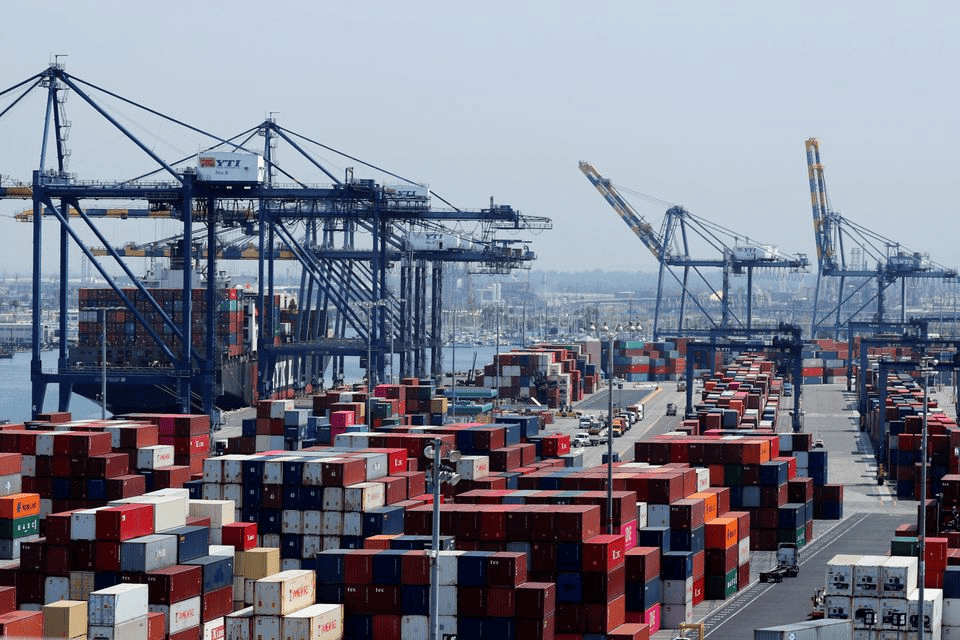The Pros and Cons of Protectionism: Balancing National Interests with Global Trade
Weigh the pros and cons of protectionism in global trade, the impact on national interests, and how to strike a balance between economic nationalism and free trade.
KEY TAKEAWAYS
- Protectionism refers to government policies that aim to restrict imports and promote domestic industries.
- The pros of protectionism include protecting domestic industries and jobs, reducing dependence on foreign countries, and promoting national security.
- The cons of protectionism include higher prices for consumers, reduced competition, and retaliation from trading partners.
- Protectionism can also lead to a trade war, which can have negative effects on the global economy.
- Countries have implemented protectionist policies in the past, such as the Smoot-Hawley Tariff Act in the US and China’s recent trade barriers.
- The key is to strike a balance between protecting national interests and promoting global trade for mutual benefit.
In recent years, protectionism has become a hotly debated topic, with some countries adopting more protectionist policies to promote their national interests, while others champion free trade and globalization. Protectionism refers to the use of tariffs, quotas, and other trade barriers to restrict imports and protect domestic industries from foreign competition. While protectionist policies can benefit domestic industries and workers, they can also have negative consequences for the global economy, including higher prices for consumers and reduced trade and investment. This article will explore the pros and cons of protectionism and its potential impact on the global economy. You’ll also examine real-world examples of countries that have adopted protectionist policies and the effects they have had on their economies.
Background
Protectionism is a government’s policy of restricting free trade between nations, to protect and promote their domestic industries. This policy is typically enacted through measures such as tariffs and quotas, which put economic barriers on foreign-made goods entering the domestic market. Protectionism is often used to protect a country’s businesses and industries, while also helping to create jobs and stimulate economic growth.
It is important to recognize, however, that protectionism can harm global trade. By limiting access to foreign-made goods, protectionism can raise prices for consumers and limit the availability of certain products. It can also lead to retaliatory actions from other countries, which can further strain international trade relations.
Importance of Balancing National Interests with Global Trade
To ensure that global trade is mutually beneficial, it is important to ensure that a country’s national interests are balanced with the interests of other countries. This can be achieved by engaging in fair trade practices and avoiding protectionist measures. Fair trade practices help to ensure that all countries involved in a trade agreement are treated equally and can reap the benefits of free trade.
At the same time, it is important to recognize that certain protectionist measures may be necessary to protect a country’s interests. This is particularly true in cases where foreign businesses are engaging in unfair practices, such as dumping products into foreign markets at below-market prices. In these cases, protectionist measures may be necessary to protect domestic businesses and industries.
Pros of Protectionism
The most obvious benefit of protectionism is that it can help to protect and promote domestic businesses and industries. By erecting economic barriers to foreign-made goods, protectionism can make it difficult for foreign competitors to compete in the domestic market. This can help to create jobs and stimulate economic growth.
In addition, protectionism can also help to protect the domestic consumer from predatory pricing practices. By raising the cost of certain foreign-made goods, protectionism can make it more difficult for foreign businesses to engage in unfair pricing practices. This can help to ensure that domestic consumers are not taken advantage of.
Cons of Protectionism
The main drawback of protectionism is that it can lead to retaliatory actions from other countries. This can lead to a tit-for-tat cycle of increasing tariffs and other economic barriers, which can further strain international trade relations. In addition, protectionism can also lead to higher prices for consumers, as foreign-made goods become more expensive due to the increased economic barriers.
In addition, protectionism can also lead to a decrease in innovation and productivity. By making it more difficult for foreign-made goods to enter the domestic market, protectionism can limit the availability of new products and technologies. This can make it more difficult for domestic businesses to remain competitive in the global market.
Finally, protectionism can also lead to a decrease in the overall level of global trade. By erecting economic barriers between countries, protectionism can make it more difficult for businesses to engage in international trade. This can lead to a decrease in the overall level of global trade, as countries become increasingly isolated from one another.

Photo: Reuters
Pros of Protectionism
Protectionism is a policy that restricts trade through the use of tariffs, quotas, and other regulations to protect domestic industries, jobs, and markets from foreign competition. While protectionism has its drawbacks, it also offers several advantages for a nation’s economy.
Protecting Domestic Industries and Jobs
Protectionism can play a key role in protecting domestic industries and jobs from being lost to foreign competition. Tariffs can be used to raise the cost of imported goods, making them less competitive with domestically produced goods. This can help domestic industries remain competitive and protect jobs in those industries. For example, when the US imposed tariffs on imported steel and aluminum in 2018, it helped protect jobs in those industries from being lost to foreign competition.
Promoting National Security and Self-sufficiency
Protectionism can also help promote national security and self-sufficiency. By protecting domestic industries, a nation can ensure that it has the resources it needs to produce essential goods and services in the event of a war or other crisis. This can reduce the need for imports, which can be difficult or impossible to obtain in times of crisis.
Encouraging Innovation and Economic Growth
Protectionism can also help encourage innovation and economic growth. By shielding domestic industries from foreign competition, it can give them the time and resources they need to innovate and develop new products and services. This can help them become more competitive in the global market and lead to economic growth.
Generating Government Revenue through Tariffs
Finally, protectionism can help generate government revenue through tariffs. Tariffs can be used to raise the cost of imported goods, and the revenue generated from these tariffs can be used to fund government programs and services. This can help a nation generate much-needed revenue to fund public services.
Conclusion
Protectionism can provide a nation with several advantages, such as protecting domestic industries and jobs, promoting national security and self-sufficiency, encouraging innovation and economic growth, and generating government revenue through tariffs. While there are drawbacks to protectionism, its potential benefits should not be overlooked.
Cons of Protectionism
Protectionism, a policy aimed at protecting domestic industries from foreign competition, has its drawbacks. Through restricting competition and consumer choice, exacerbating trade tensions and retaliations, raising prices, and stifling economic efficiency and productivity, protectionism can be detrimental to both the domestic and global economies.
Restricting Competition and Consumer Choice
Protectionism puts restrictions on foreign competition, limiting the choices available to consumers and driving up prices. With fewer competitors, domestic companies are less likely to innovate, resulting in a lower quality of goods and services. Consumers are also less likely to benefit from the lower prices that come with competition, as protectionist policies protect domestic companies from foreign competition.
Exacerbating Trade Tensions and Retaliations
Protectionist policies can lead to trade tensions and retaliations from other countries. This can lead to a decrease in international trade, as countries become less willing to trade with each other due to protectionist policies. This can harm the global economy, as it reduces the number of economic opportunities for countries to export their goods and services.
Raising Prices for Domestic Consumers
Protectionism can lead to higher prices for consumers in the domestic market, as domestic companies can increase their prices without fear of competition from foreign companies. This can result in a decrease in consumer purchasing power, as consumers are unable to take advantage of lower prices from foreign markets.
Stifling Economic Efficiency and Productivity
Protectionism can lead to a decrease in economic efficiency and productivity, as it restricts competition and limits the number of choices available to consumers. Domestic companies are less likely to innovate, resulting in a decrease in productivity, and this can harm the global economy. In addition, protectionism can lead to a decrease in economic growth, as it reduces the number of economic opportunities for countries to export their goods and services.
Overall, protectionism can harm both the domestic and global economy. It restricts competition and consumer choice, exacerbates trade tensions and retaliations, raises prices, and stifles economic efficiency and productivity. For these reasons, it is important to carefully consider the pros and cons of protectionism before implementing any protectionist policies.

Photo: Reuters
Real World Scenarios
Protectionism is a controversial topic that has been implemented by several countries over the years. This section will analyze two real-world scenarios where protectionism policies have been applied and their impact on the global economy.
Case Study of Protectionist Policies in the United States
The United States has a long history of protectionism, and its current administration has implemented several measures aimed at protecting domestic industries. One example is the imposition of tariffs on steel and aluminum imports from several countries, including China. While this has led to the creation of jobs in the steel and aluminum industries, it has also resulted in higher prices for American consumers and retaliation from other countries, causing a trade war.
Case Study of Protectionist Policies in China
China’s economic rise has been partially attributed to its protectionist policies, which include subsidies to domestic industries and restrictions on foreign investment. This has led to accusations of unfair competition and intellectual property theft by other countries. Recently, China’s protectionist policies have been met with pushback, and the country has faced increasing scrutiny from the international community.
Analysis of the Impact of Protectionism on the Global Economy
Protectionism policies can have both positive and negative effects on the global economy. While they can create jobs and protect domestic industries, they can also lead to higher prices for consumers and retaliation from other countries, causing a trade war. In addition, protectionism can discourage innovation and competition, which can have long-term negative effects on the global economy. The impact of protectionism on the global economy will continue to be a topic of debate, and finding a balance between national interests and global trade will be essential for achieving sustainable economic growth.
Final Thoughts
Protectionism is a way for governments to balance national interests and global trade. While it can be beneficial in some cases, it can also have some disadvantages. Protectionist policies can lead to higher prices, decreased competition, and unfair treatment of foreign businesses. By understanding the pros and cons of protectionism, countries can use it strategically to promote the growth of their economies while still being fair to foreign businesses. Global trade is an important part of the world economy, and protectionism can be used to promote healthy competition and economic growth in a balanced way. Ultimately, protectionism is a complex issue, and countries must use it carefully to ensure the best outcomes for both their citizens and the global economy.






























Comment Template